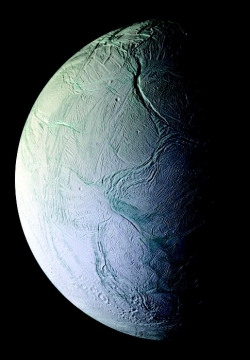Bonds and chemical groups found in biomolecules form in ices bombarded by the electrons
When scientists think about what drives chemistry in space, high-energy radiation, such as X-rays, gamma rays, and ions, gets most of the attention. But a new study suggests that low-energy electrons may actually do much of the heavy lifting when it comes to forming bonds and making compounds that could be precursors to complex organic molecules.
Michael A. Huels, Léon Sanche and their groups at the University of Sherbrooke observed these reactions by studying methane and oxygen ice under conditions resembling interstellar space. After bombarding the ice with low-energy electrons, they detected spectroscopic signatures of ethane and ethanol, as well as carbonyl and carboxylate functional groups
“We have known that significant chemistry occurs from higher-energy sources,” says Stefanie N. Milam of the National Aeronautics & Space Administration, who was not involved in the work. “Demonstrating the formation of complex species from these low-energy electrons provides even further evidence of how readily chemistry is induced and occurs within surfaces both in and out of the solar system.”
When an X-ray or gamma ray strikes an atom or molecule, it can knock off a high-energy electron. That electron then can hit other atoms and molecules as it goes whizzing off, generating secondary, low-energy electrons that could induce the chemistry the scientists observed.
The researchers say this chemistry could happen on grains of ice and dust in nebulae, on comets, or on icy bodies in our solar system such as Jupiter’s moon Europa and Saturn’s moon Enceladus. But Huels is careful to point out that the molecules they observed are still a far cry from the ingredients for life.
“We’re not making a building block of life here,” he says. “We’re making organic molecules that are more complex than the two molecules we put in there. However, the fundamental chemistry would be similar when making small biomolecules in astrophysical or planetary ices.”
Huels’s and Sanche’s groups, which spend most of their time studying the effects of low-energy electrons and ions on DNA during radiotherapy, made ices from methane and oxygen at 22 K and 6 x 10-11 Torr. They fired beams of low-energy electrons—less than 100 eV—at the ices.
Using X-ray photoelectron spectroscopy and thermal desorption mass spectrometry, the team could identify molecules formed in the ice during the electron bombardment. Although the group saw evidence of bonds breaking and new bonds forming, they say they don’t yet know the precise chemical reaction paths happening in the ice.
The next step, according to Huels, is to make more complex ices. His group has now tested ice mixtures containing methane, oxygen, and ammonia, using electrons with energies as low as 8 eV. Huels says they hope to publish those results soon.
Source: C&EN

































Leave a Comment
You must be logged in to post a comment.